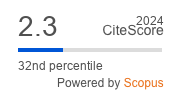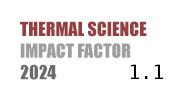ABSTRACT
The increasing use of electric vehicles necessitates robust safety measures, particularly in battery management systems. This study emphasizes predictive maintenance by introducing a proactive approach to fire safety management using machine learning. The behavior of 60% Nickel, 20% Manganese, and 20% Cobalt (NMC 622) prismatic cells under mechanical impact was investigated, with CO and CO2 gas emissions monitored as early indicators of thermal runaway, a phenomenon that can lead to rapid and uncontrollable temperature increases if undetected. A real-scale experimental set-up simulated mechanical impacts, and the collected data were analyzed using MATLto derive meaningful insights. Four machine learning models - coarse tree, binary GLM-LR, efficient linear support vector machines, and Gaussian Naive Bayes-were trained and validated to predict the likelihood of thermal runaway based on gas emission patterns. This proactive approach enhances battery reliability and safety by enabling early intervention in critical areas, ensuring passenger safety. By addressing a significant gap in current research, this study contributes to the development of smarter and safer electric vehicles.
KEYWORDS
PAPER SUBMITTED: 2024-12-03
PAPER REVISED: 2025-02-11
PAPER ACCEPTED: 2025-05-04
PUBLISHED ONLINE: 2025-09-26
THERMAL SCIENCE YEAR
2025, VOLUME
29, ISSUE
Issue 4, PAGES [2955 - 2966]
- Lu, L., et al., A Review on the Key Issues for Lithium-Ion Battery Management in Electric Vehicles, Journal of Power Sources, 226 (2013), Mar., pp. 272-288
- Wang, H., et al., Experimental Study on the Cell-Jet Temperatures of Abused Prismatic Ni-Rich Automotive Batteries under Medium and High States of Charge, Applied Thermal Engineering, 202 (2022), 117859
- Chen, J., et al., Designing an Intrinsically Safe Organic Electrolyte for Rechargeable Batteries, Energy Storage Materials, 31 (2020), Oct., pp. 382-400
- Park, S.-Y., et al., Observation and Modeling of the Thermal Runaway of High-Capacity Pouch Cells due to an Internal Short Induced by an Indenter, Journal of Energy Storage, 72 (2023), 108518
- Wang, E., et al., Safety Assessment of Polyolefin and Nonwoven Separators Used in Lithium-Ion Batteries, Journal of Power Sources, 461 (2020), 228148
- Golubkov, A. W., et al., Thermal Runaway of Commercial 18650 Li-Ion Batteries with LFP and NCA Cathodes - Impact of State of Charge and Overcharge, RSC Adv., 5 (2015), 70, pp. 57171-57186
- Sun, P., et al., A Review of Battery Fires in Electric Vehicles, Fire Technology, 56 (2020), Jan., pp. 1361-1410
- Jin, Y., et al., Explosion Hazards Study of Grid-Scale Lithium-Ion Battery Energy Storage Station, Journal of Energy Storage, 42 (2021), 102987
- Ghiji, M., et al., A Review of Lithium-Ion Battery Fire Suppression. Energies, 13 (2020), 19, 5117
- Bingol, K., et al., Artificial Intelligence Applications in Earthquake Resistant Architectural Design: Irregular Load-Bearing System Detection Using Deep Learning and Image Processing Method, Journal of the Faculty of Engineering and Architecture of Gazi University, 35 (2020), 4, pp. 2197-2209
- Taye, M. M., Understanding of Machine Learning with Deep Learning: Architectures, Workflow, Applications and Future Directions, Computers, 12 (2023), 5, 91
- Hirani, R., et al., Artificial Intelligence and Healthcare: A Journey through History, Present Innovations, and Future Possibilities, Life, 14 (2024), 5, 557
- Gerlich, M., Perceptions and Acceptance of Artificial Intelligence: A Multi-Dimensional Study, Social Sciences, 12 (2023), 9, 502
- Khan, F. H., et al., Advancements in Microprocessor Architecture for Ubiquitous AI - An Overview on History, Evolution, and Upcoming Challenges in AI Implementation, Micromachines, 12 (2021), 6, 665
- Valente, J., et al., Developments in Image Processing Using Deep Learning and Reinforcement Learning, J. Imaging, 9 (2023), 10, 207
- Rafique, S. H., et al., Machine Learning and Deep Learning Techniques for Internet of Things Network Anomaly Detection - Current Research Trends, Sensors, 24 (2024), 6, 1968
- Roy, S., et al., Demystifying Supervised Learning in Healthcare 4.0: A New Reality of Transforming Diagnostic Medicine, Diagnostics, 12 (2022), 10, 2549
- Wang, J., et al., Multi-Augmentation-Based Contrastive Learning for Semi-Supervised Learning, Algorithms, 17 (2024), 3, 91
- Van Engelen, J. E., Hoos, H. H., A Survey on Semi-Supervised Learning, Machine Learning, 109 (2020), 2, pp. 373-440
- Zhou, X., et al., Study on the Evolution of Spatiotemporal Dynamics and Regional Differences in the Development of Digital Agriculture in China, Sustainability, 16 (2024), 16, 6947
- Cao, Y., Huang, X., A Coarse-to-Fine Weakly Supervised Learning Method for Green Plastic Cover Segmentation Using High-Resolution Remote Sensing Images, ISPRS Journal of Photogrammetry and Remote Sensing, 188 (2022), June, pp. 157-176
- Alghamdi, S. J., Classifying High Strength Concrete Mix Design Methods Using Decision Trees, Materials, 15 (2022), 5, 1950
- Men, X., et al., Site Class Effects on Stump and Coarse Root Biomass Models of Larix Olgensis in Northeastern China, Forests, 13 (2022), 8, 1259
- Gomila, R., Logistic or Linear? Estimating Causal Effects of Experimental Treatments on Binary Outcomes Using Regression Analysis, Journal of Experimental Psychology: General, 150 (2020), 4, 700
- Schaeben, H., (2014). Targeting: Logistic Regression, Special Cases and Extensions, ISPRS International Journal of Geo-Information, 3 (2014), 4, pp. 1387-1411
- Yang, Z., et al., A New Three-Way Incremental Naive Bayes Classifier, Electronics, 12 (2023), 7, 1730
- Barros, W. K. P., et al., Fully Parallel Proposal of Naive Bayes on FPGA, Electronics, 11 (2022), 16, 2565
- Lei, Z., Lan, L., Improved Subsampled Randomized Hadamard Transform for Linear SVM, Proceedings of the AAAI Conference on Artificial Intelligence, 34 (2020), 4, pp. 4519-4526
- Pirouz, B., Pirouz, B., Multi-Objective Models for Sparse Optimization in Linear Support Vector Ma-chine Classification, Mathematics, 11 (2023), 17, 3721
- Bárcenas, R., et al., On Subsampling Procedures for Support Vector Machines, Mathematics, 10 (2022), 20, 3776
- Al-Naeem, M., et al., Support Vector Machine-Based Energy Efficient Management of UAV Locations for Aerial Monitoring of Crops over Large Agriculture Lands, Sustainability, 15 (2023), 6421
- Ali, L., et al., A Feature-Driven Decision Support System for Heart Failure Prediction Based on χ2 Statistical Model and Gaussian Naive Bayes, Computational and Mathematical Methods in Medicine, 2019 (2019), 6314328
- Zhang, Y., et al., Intelligent Identification for Rock-Mineral Microscopic Images Using Ensemble Machine Learning Algorithms, Sensors, 19 (2019), 18, 3914
- Alarifi, I. M., et al., Investigation of Thermal Runaway in Lithium-Ion Batteries, Journal of Energy Storage, 8 (2016), May, pp. 161-169

